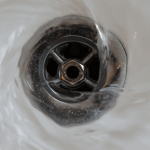Why Every Home Needs an Expansion Tank for the Water Heater
Hot water is a necessity. Yet, most homeowners rarely think about what keeps their water heating systems safe. One of the most overlooked components is the expansion tank. Though small, it plays a critical role in protecting both your water heater and plumbing system from damage.
What Does an Expansion Tank Do?
When water is heated, it expands. This increase in volume creates extra pressure inside your plumbing. Modern closed-loop systems don’t allow the excess pressure to flow back into the city water line. Without a place to go, the pressure builds. That pressure can damage pipes, strain fittings, and shorten the life of your water heater.
An expansion tank absorbs this pressure. It acts as a cushion. Inside, a rubber bladder separates air from water. As the pressure builds, water flows into the tank and compresses the air. This relieves stress on your plumbing system.
Why It’s More Than Just a Safety Feature
Expansion tanks for water heaters don’t just add protection—they also promote efficiency. By managing pressure, they reduce the chance of water leaks, ruptured valves, or worn-out seals. This means fewer repairs, less wasted water, and a longer lifespan for your system.
More importantly, they keep your home safe. A failed water heater under pressure can cause flooding or worse. With an expansion tank in place, that risk drops significantly.
Does Code require it?
Many homeowners ask, “Is it code to have an expansion tank on a water heater?” The answer depends on your location and your home’s plumbing setup. In areas with closed water supply systems, it’s often a requirement.
According to Plumbing Solutions, if your home uses a backflow preventer or pressure-reducing valve, the plumbing code likely mandates an expansion tank. This ensures the system can safely handle thermal expansion. Failing to install one could result in violations of the water heater code or, worse, serious plumbing damage.
Key Benefits of Installing an Expansion Tank
- Protects Your Plumbing: Absorbs pressure to prevent stress on pipes.
- Extends Equipment Life: Reduces wear on your water heater and fixtures.
- Reduces Leak Risk: Prevents minor drips and major floods.
- Lowering Maintenance Costs: Minimizes repair needs.
- Improves Safety: Prevents pressure-related failures.
Final Thought
Ignoring expansion tanks is a gamble. They’re affordable, easy to install, and save money in the long run. For homes with modern plumbing setups, they’re not just helpful—they’re essential. If you’re updating or replacing a water heater, it’s smart—and often required—to include an expansion tank in the system.














